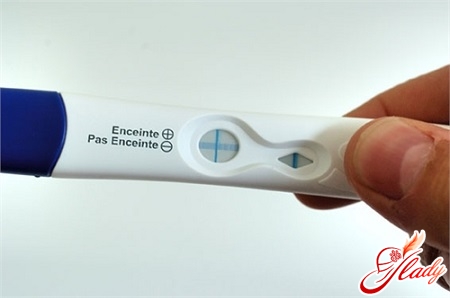 Uterine fibroids – symptoms, treatment.A huge number of women have to deal with these concepts. Unfortunately, women's health is very fragile and vulnerable. One of the most common diseases is uterine fibroids. What is it, what are the symptoms of uterine fibroids and how to treat it - we asked a gynecologist to tell us. After all, you need to know your enemy by sight - then it will not be difficult to defeat him. Often, a woman who finds out that she has uterine fibroids has no idea what kind of disease it is and what the fibroids themselves look like. And the unknown is much worse. The purpose of this article is to familiarize readers with the concept of fibroids, what their symptoms are and how to deal with them. However, remember that all information in this material is for informational purposes only and cannot serve as a basis for self-diagnosis of the disease or its treatment. In some sources, you can also find such a name for this disease as "fibroma" - this is the second name for uterine fibroids. Uterine fibroids are tumors consisting of connective tissue and muscle fibers. In all cases, uterine fibroids are exclusively benign tumors, as they do not contain cancer cells. Therefore, uterine fibroids can be successfully treated. Moreover, uterine fibroids and pregnancy are quite compatible - this diagnosis is not a death sentence. Many women who have encountered this problem are extremely concerned about the consequences of this disease for their health. In fact, there is absolutely no reason to worry - timely and adequate treatment in almost all cases guarantees a woman's complete recovery, without any further negative consequences. In appearance, uterine fibroids are an elastic seal, most often round in shape. The size of the uterine fibroids depends on many factors, including the work of the hormonal and immune systems of each specific woman. In one woman, a uterine myoma may be so small that it is only possible to detect the myoma using either an ultrasound examination or an X-ray of the uterus. But in some women, it can reach quite large sizes – up to a kilogram in weight. Such a myoma is easy to notice even with the naked eye. In addition, bleeding with uterine myoma in such cases is almost always an accompanying phenomenon.
Uterine fibroids – symptoms, treatment.A huge number of women have to deal with these concepts. Unfortunately, women's health is very fragile and vulnerable. One of the most common diseases is uterine fibroids. What is it, what are the symptoms of uterine fibroids and how to treat it - we asked a gynecologist to tell us. After all, you need to know your enemy by sight - then it will not be difficult to defeat him. Often, a woman who finds out that she has uterine fibroids has no idea what kind of disease it is and what the fibroids themselves look like. And the unknown is much worse. The purpose of this article is to familiarize readers with the concept of fibroids, what their symptoms are and how to deal with them. However, remember that all information in this material is for informational purposes only and cannot serve as a basis for self-diagnosis of the disease or its treatment. In some sources, you can also find such a name for this disease as "fibroma" - this is the second name for uterine fibroids. Uterine fibroids are tumors consisting of connective tissue and muscle fibers. In all cases, uterine fibroids are exclusively benign tumors, as they do not contain cancer cells. Therefore, uterine fibroids can be successfully treated. Moreover, uterine fibroids and pregnancy are quite compatible - this diagnosis is not a death sentence. Many women who have encountered this problem are extremely concerned about the consequences of this disease for their health. In fact, there is absolutely no reason to worry - timely and adequate treatment in almost all cases guarantees a woman's complete recovery, without any further negative consequences. In appearance, uterine fibroids are an elastic seal, most often round in shape. The size of the uterine fibroids depends on many factors, including the work of the hormonal and immune systems of each specific woman. In one woman, a uterine myoma may be so small that it is only possible to detect the myoma using either an ultrasound examination or an X-ray of the uterus. But in some women, it can reach quite large sizes – up to a kilogram in weight. Such a myoma is easy to notice even with the naked eye. In addition, bleeding with uterine myoma in such cases is almost always an accompanying phenomenon.
Types of myoma
There are several types of uterine fibroids. Basically, the classification of fibroids depends on how and where exactly it is located. The main types of uterine fibroids are listed below:
- Subserous myoma of the uterus. This type of fibroid develops in the peritoneum, on the surface of the uterus. The subserous uterine myoma has either a wide base or a fairly long stem.
- Submucous form of uterine myoma. In this case, the growth of the uterine myoma is directed towards the uterine cavity, under its mucous membrane.
- Interstitial form of uterine fibroids. With this form of uterine fibroids, condensation occurs directly in the uterus wall itself. Until the uterine myoma reaches a significant size and does not begin to squeeze the uterus cavity, or the uterine tube, it does not cause any pain.
- Nodal uterine myoma. This is a form of uterine fibroids, in which tumors are of a multiple nature and have the appearance of nodules.
The most common localization of tumors isnamely, in the body of the uterus – in approximately 80% of all cases of the disease. In the remaining 20% of cases, the presence of a tumor is visualized in the cervix. It is also impossible not to mention that uterine fibroids are a disease of women aged 35–40 years and older, while cases of the disease in young women are extremely rare – no more than 9% of all cases. Fibroids never occur in girls who have not reached puberty, and after the onset of menopause, they gradually resolve and disappear on their own. Doctors have noticed one interesting pattern – the diagnosis of uterine fibroids in women who have already consulted a doctor with complaints of malaise is only 21%. All other uterine fibroids are detected completely by chance, when seeking complaints about other diseases or during a preventive examination. But uterine fibroids do not entail consequences only if treatment is started on time. And sometimes the diagnosis of uterine fibroids is untimely, when conservative treatment is almost impossible. In such cases, doctors are forced to resort to surgical intervention. That is why it is so important to undergo the required gynecological examinations in a timely manner in order to detect possible problems in time. After all, it is much wiser to play it safe and detect a problem in time than to undergo surgical intervention later.
Diagnosis and treatment of the disease
Timely diagnosis of uterine fibroids hasgreat importance - the sooner the treatment is started, the more painless and successful it will be. In modern medicine, various diagnostic methods are used. However, today the most optimal and effective way to detect the presence of uterine fibroids in a woman is to conduct an ultrasound examination of the uterus. In the presence of the disease, the uterus increases in size, its shape is deformed. It is useful for all women to know how to treat uterine fibroids. There are two ways to treat uterine fibroids: conservative and surgical.
- Conservative treatment
Treatment of uterine fibroids without surgery isthe desire of every woman who has encountered this disease. However, it is still worth listening to the opinion of your doctor. In the event that there are indications for surgical intervention, which will be discussed below, you should not rely only on hormonal treatment. It is suitable only for those cases when the size of the uterine fibroid is not significant. And, in addition, doctors can use hormonal therapy as preparation for surgery. An attempt to treat an advanced fibroid hormonally will not bring any results, but will only be a waste of time and money. The maximum that can be achieved in this way is the onset of temporary improvement. Hormonal therapy is aimed at removing, or at least to some extent weakening the symptoms of uterine fibroids and slowing down its growth a little. And in the event that with the help of hormonal therapy doctors prepare a sick woman for subsequent surgery, hormonal therapy significantly simplifies the operation and facilitates postoperative rehabilitation.
- Myoma of the uterus - operation
Uterine removal surgeries also occurconservative and radical. The doctor decides what kind of intervention is necessary in each specific case, based on the characteristics of the woman's disease. For example, if a woman has a number of concomitant diseases of the uterus and fallopian tubes - pathological deformation of the cervix, hyperplastic changes or malignant processes of the uterine endometrium, the presence of uterine sarcoma, etc., the woman is shown a complete removal of the entire body of the uterus. Or another example - uterine fibroids and endometriosis are usually inseparable companions. As a rule, such situations occur in older women. Doctors will choose the best method for performing the operation. Removal of the uterus for fibroids can be performed in different ways. This can be either an abdominal operation or performed laparoscopically or intravaginally. The decision is influenced by a fairly large number of various factors, such as:
- The need to examine the entire abdominal cavity.
- The presence of a pronounced fatty layer.
- Additional interventions on ovaries, fallopian tubes.
Treatment of uterine myoma by folk methods
If a woman is not shown surgery, but is prescribedhormonal treatment, she can try alternative treatments. If a woman has uterine fibroids, treatment with folk remedies can significantly alleviate her condition. However, do not forget that before using any remedy, a sick woman is simply obliged to consult with her doctor. And, of course, there can be no talk of refusing the prescribed treatment at all.
However, remember - if you have uterine fibroids,Herbal treatment can only be carried out if you do not have any allergic reactions to any raw materials. And once again, finally, we remind you that folk remedies for uterine fibroids can only be used with the permission of your doctor. We recommend reading:









